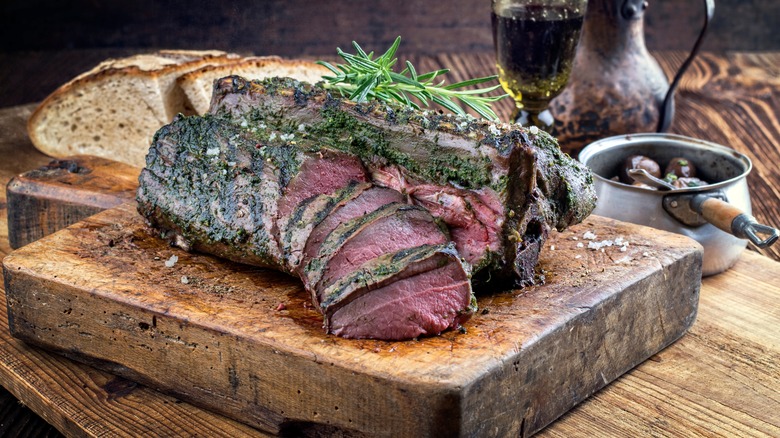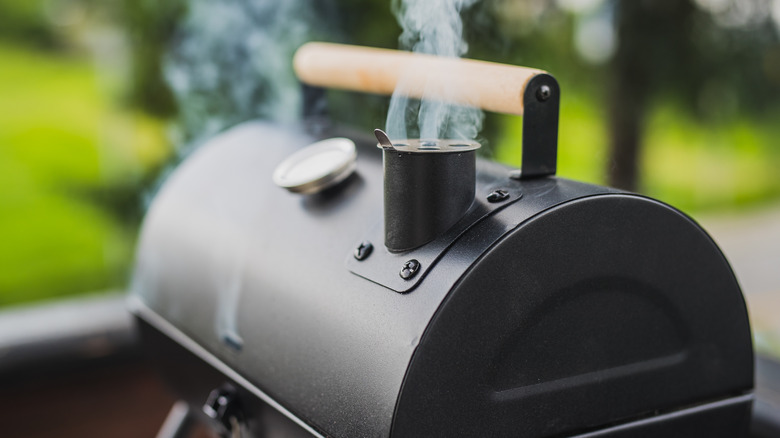Why You Should Take Care When Smoking Venison Backstrap
If you have a taste for wild game meat then you know that one of the most popular and versatile kinds is venison. Venison is most commonly used in reference to deer meat but also encompasses elk, caribou, and antelope. It is considered red meat but has half as much fat as beef, making it a healthier option for meat-eaters, per ThinkHealth. Some might say that the flavor is comparable to beef, but, overall, venison does have its own distinct flavor.
If a deer has been properly field dressed, processed, and aged, it should have a mild flavor, with very little "gamey" flavor. The meat is rich and even a bit earthy depending on the animal's diet which, for the wild deer family, includes acorns, grasses, and berries. One of the most popular cuts from a deer is the backstrap, which is a long, lean cut of meat that is found on the sides of the animal's spine. It is a muscle that is used very little, making it extremely tender.
Hunters and venison fans consider the backstrap a prize cut. When the bones are left in place and frenched (a process where the meat directly on the bones is cut away), the backstrap becomes a rack of venison, similar to a rack of lamb. Backstraps can be grilled, roasted, pan-fried, stuffed, wrapped in pastry or bacon, and even smoked. But if you choose to cook it in a smoker, you'll need to give it your full time and attention.
It can dry out quickly
The low-fat content in a venison backstrap actually makes the cut very easy to overcook because there is little to no extra moisture running through the meat. So, in a way, using a "low and slow" cooking method like smoking could actually work in your favor. Still, a backstrap can evolve from perfectly cooked to dry and chewy in a matter of minutes, so you'll want to ensure your smoker maintains an even cooking temperature throughout, and check the internal temperature of the meat with a meat thermometer. It will be rare to medium rare when the temperature reaches 130 to 145 degrees Fahrenheit.
After letting your smoked backstrap rest, the meat should be tender, juicy, and delicious with a wonderful smoked flavor. If you want to take extra steps to ensure you won't end up with dry meat, you can try dry brining the backstrap in advance, or salt the meat and refrigerate it the day before you put it in the smoker. In addition, place a pan of water in the smoker along with the meat which will slowly surround the backstrap with moisture as it cooks. You don't have to limit this cooking method to backstrap either — it is a perfect way to prepare the tenderloin, shoulder, and steaks cut from the hind leg.

